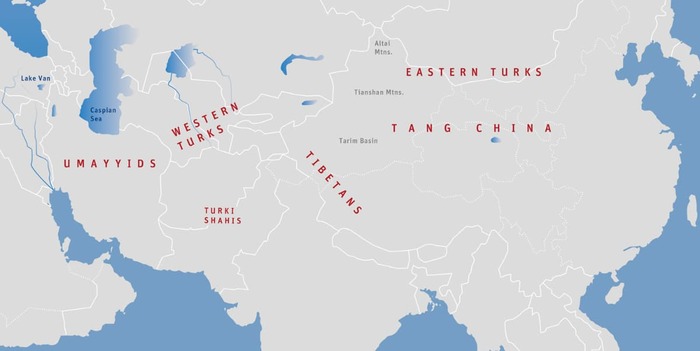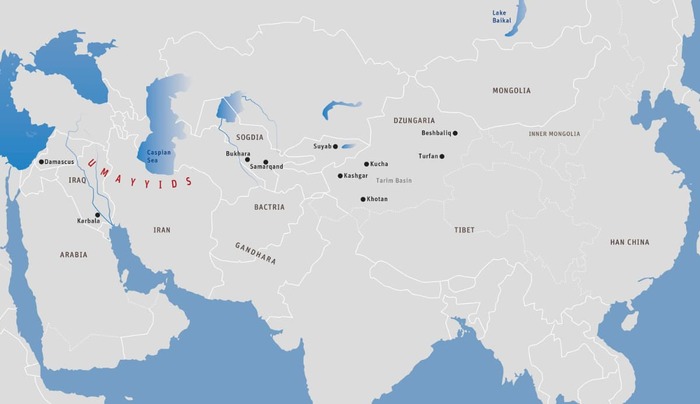The Pre-Islamic Presence of Buddhism in North Africa and West Asia
India and West Asia have a long history of land and sea trade between them. Commercial relations between India and Mesopotamia began as early as 3000 BCE and between India and Egypt, through the intermediary ports of Yemen, from 1000 BCE. The Baveru Jataka, a chapter from an early Buddhist collection of accounts of the previous lives of the Buddha, refers to maritime trade with Babylon (Sanskrit: Baveru).
In 255 BCE, the Indian Mauryan emperor, Ashoka (r. 273 – 232 BCE), sent Buddhist monks as ambassadors to establish relations with Antiochus II Theos of Syria and Western Asia, Ptolemy II Philadelphos of Egypt, Magas of Cyrene, Antigone Gonatas of Macedonia, and Alexander of Corinth. Eventually, communities of Indian traders, both Hindu and Buddhist, settled in some of the major sea and river ports of Asia Minor, the Arabian Peninsula and Egypt. Indians of other occupations soon followed. The Syrian writer, Zenob Glak, wrote of an Indian community, complete with its own religious temples, on the upper Euphrates River in modern-day Turkey to the west of Lake Van in the second century BCE, and the Greek ex-patriot, Dion Chrysostom (40 – 112 CE), wrote of a similar community in Alexandria. As evidenced by archeological remains, other Buddhist settlements were south of Baghdad on the lower Euphrates River at Kufah, on the eastern Iranian coast at Zir Rah and at the mouth of the Gulf of Aden on the island of Socotra.
With the decline of Babylonian and Egyptian civilizations in the middle of the first millennium CE and the simultaneous curtailing of Byzantine shipping in the Red Sea, much of the trade between India and the West came by sea to the Arabian Peninsula and then proceeded by land through Arab intermediaries. Mecca, the birthplace of the Prophet Muhammad (570 – 632 CE), became an important trade center where merchants met from the East and the West. More Indian communities established themselves in the Arabian cultural area. Among them, one of the most prominent were the Jats (Arab. Zut), many of whom settled in Bahrain and at Ubla, near modern-day Basrah at the head of the Persian Gulf. The Prophet’s wife, Aisha, was once treated by a Jat physician. Thus, Muhammad was undeniably familiar with Indian culture.

As further evidence, the mid-twentieth century scholar, Hamid Abdul Qadir, in his Buddha the Great: His Life and Philosophy (Arabic: Budha al-Akbar Hayatoh wa Falsaftoh), proposes that the Prophet Dhu’l Kifl (The Man from Kifl), mentioned twice in the Quran as patient and good, refers to Buddha, although most assert him to be Ezekiel. According to this theory, “Kifl” is the Arabic rendition of “Kapilavastu,” the Buddha’s birthplace. This scholar also suggests that the Quranic reference to the fig tree likewise refers to the Buddha who attained enlightenment at the foot of one.
The Tarikh-i-Tabari, a tenth century reconstruction of the early history of Islam written in Baghdad by al-Tabari (838 – 923), speaks of another group of Indians present in Arabia, the Ahmaras or “Red-Clad People” from Sindh. These were undoubtedly saffron-robed Buddhist monks. Three of them reportedly explained philosophical teachings to the Arabs during the first few years of the Islamic era. Thus, at least some Arab leaders were aware of Buddhism before they extended Islam beyond the Arabian Peninsula.

